FIBCs, otherwise known as Flexible Intermediate Bulk Containers, provide a cost-effective and convenient packaging solution for handling, shipping, and storing dry bulk flowable products.
Packaging Supplies
FIBC Bulk Bags
CORE7 allows you to get quick delivery of the right products at the best prices. We do it by using Local inventory, volume buying and 200 years of expertise – giving you… Delivered.

Optimization
How can you optimize your FIBC Bulk Bags?
Bulk Bag Construction
There are many different types of bulk bag construction to choose from. Identifying the right one for your application can help optimize your storing, filling, and discharge of your products in your FIBC bulk bag.
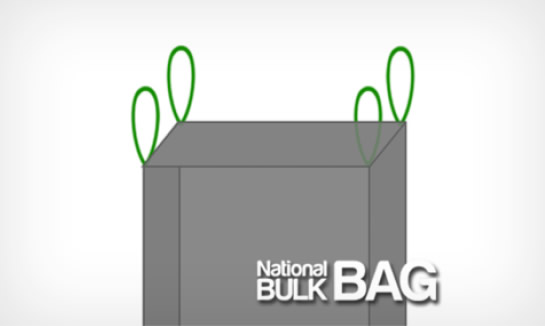
Top & Bottom Construction
Choosing your top and bottom bulk bag construction is important for optimizing your filling and discharging. Depending on the product that is being stored in you bulk bag, that will indicate which top and bottom construction style you will need.
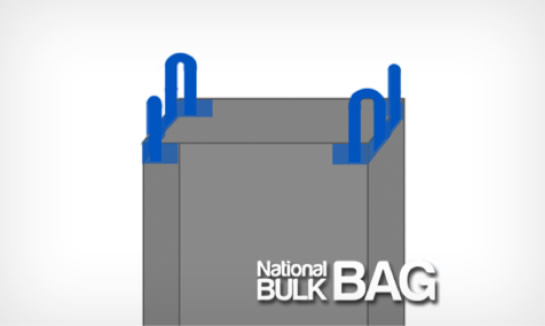
Panel Bag Construction
Not all bulk bags are constructed with the same technique. Some of the most common types of bulk bag panel construction are U-panel, Circular and 4-Panel. Each style offers different advantages and disadvantages. Your application will depend on which bulk bag panel construction to choose.
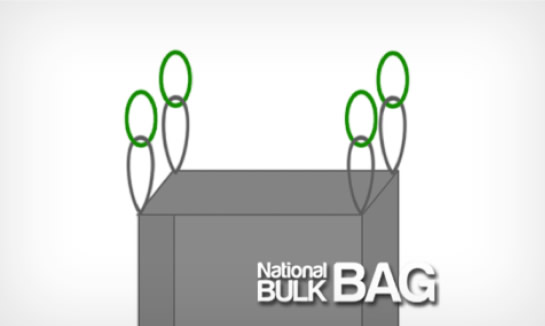
Fabric Weight
If you’re storing or transporting a product that had sharp edges, is abrasive, or requires a higher safe working load, it’s important to make sure you identify the right fabric weight for your product.
Safe Working Load (SWL)
Protecting your investment is important. When you’re choosing the right FIBC bulk bag for your application, be sure to consider what Safe Working Load (SWL) you need. Your product may require a 5:1 or 6:1 safety factor ratio.
- 5:1 Safety Factor Ratio: These are intended for one-time use and can hold up to 5 times the amount of the SWL.
- 6:1 Safety Factor Ratio: These can be used multiple times and can hold up to 6 times the amount of the SWL.
Please note that there are strict safety guidelines for utilizing FIBC bulk bags at their capacities. Download our Official FIBC Safety Guide here.
Lift Loop Options
Customizing your lift loops can impact how you move and transport your FIBC bulk bags. The color of your lift loops is also customizable, and this can help by color coordinating your products.
Three main lift loop styles offer different features to help in transporting your bulk bags.
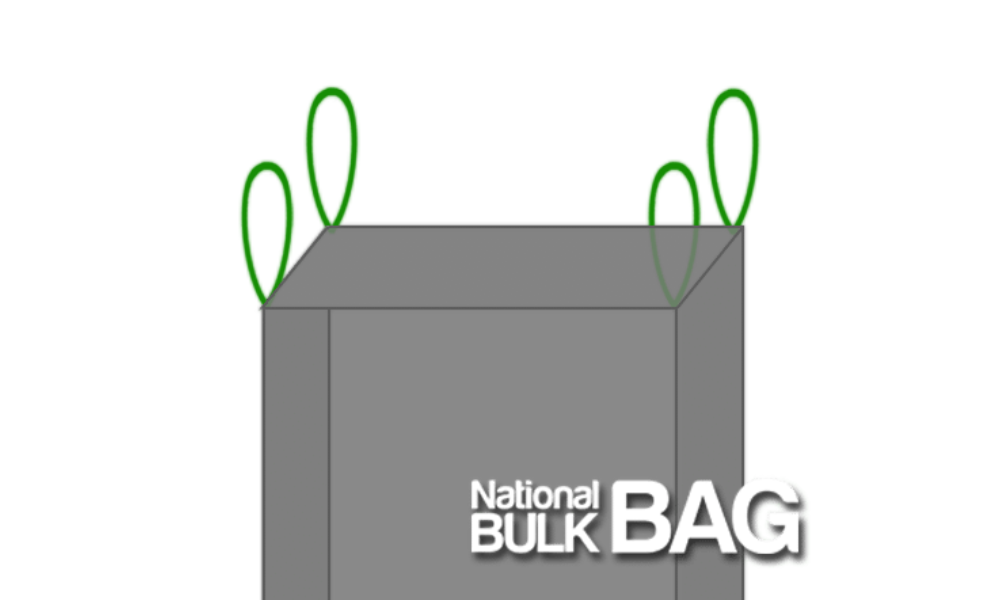
Loop Over Loop
This is the most common and cost-effective type of lift loop.
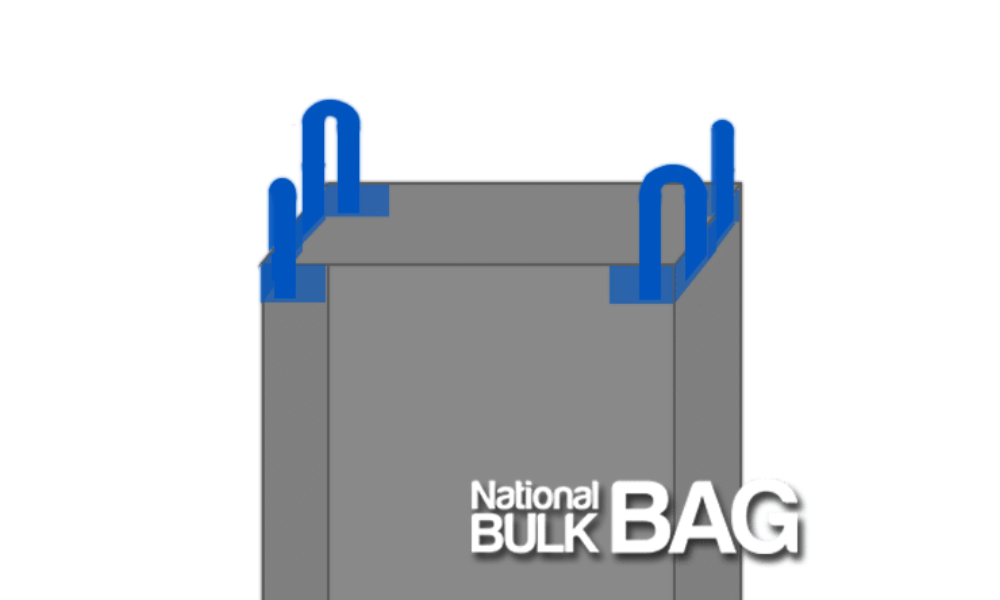
Cross Corner Loops
These lift loops are designed to position themselves upright when the bag is full, making it easier for forklift drives to lift and move the bag.
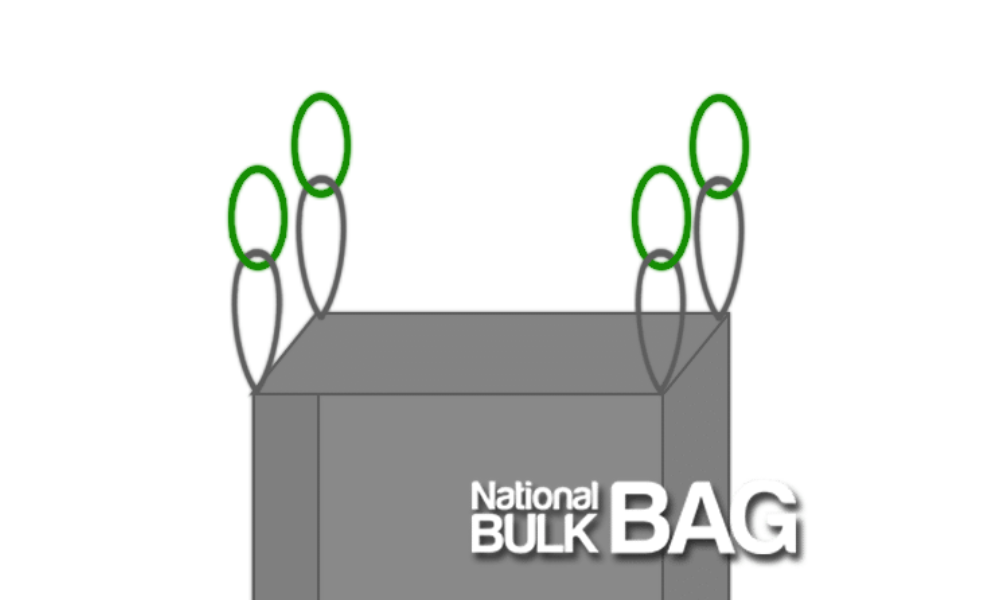
Stevedore Straps
This type of strap adds another loop or two to the four corner loops, allowing you to lift and move the bulk bag by one or two straps instead of all four corners.
Application
What type of box is right for your application?
Food Grade
If you have a food grade application, it’s important to have a supplier who upholds the requirements of the food safety guidelines for your bulk bags. Food grade bulk bags need to be GFSI (Global Food Safe Initiative) certified and BRC and FDA approved. Additionally, food grade FIBCs are made from 100% virgin polypropylene resin. All Rapid Packaging’s food grade bulk bags uphold these requirements.
Types A, B, C, D Bulk Bags
Understanding what type of bulk bag to get is one of the most important parts of choosing the right bulk bag. Your product that is going into the bag will dictate which type of bulk bag you should be using.
- Type A: Made of plain-woven polypropylene fabric. These types of FBICs provide no static protection.
- Type B: Similar to Type A bulk bags but are made from materials that have a low breakdown voltage that can help prevent an incident where highly energetic and dangerous brush discharges occur. Although they can help in these circumstances, these bags are not considered anti-static protected.
- Type C: These are known as conductive FIBCs and are made from non-conductive woven polypropylene. They must be grounded during filling and discharging and are cleared to be used for flammable powders and when flammable vapors, gases, or combustible dust is present.
- Type D: These bags are made from anti-static or static dissipative fabrics. Type D bags can store combustible products and handle products in combustible and flammable environments.
Bulk Bag Liners
Polyethylene liners are flexible plastic liners that can be used to line the inside of a bulk bag. They can be utilized in a multitude of different applications and can help prevent moisture, dust, and other contaminants from damaging your product inside the bulk bag.
Baffled Bulk Bags
Bulk bags without baffles naturally bulge when filled with product and can make it inefficient to stack and store them. Baffled bags help with this inefficiency. Baffles are extra pieces of material sewn along the corners inside the bulk bag. This allows the bag to keep its square shape when filled, making it easier to store and stack side by side. These are commonly used in grain applications.
Vented Bulk Bags
Vented bulk bags are a great way to allow your product to breathe. These FIBCs have slits along the sides of the bulk bag to allow moisture to escape and air to flow freely around your product. These are great for firewood applications and produce applications.
Coated vs. Non-Coated
Coated bulk bags are similar to standard FIBC bulk bags; however, additional pieces of polypropylene film are sewn into the small gaps between the weave of the bag. This benefits customers with powder applications so that the product won’t get stuck between the bulk bags’ weaves.
Challenges
What challenges are you experiencing?
How can I combat price increases on my bulk bags?
As reuse and recycling become more prevalent, this changes the way boxes respond to anything taped or inked onto them. Depending on if you’re using recycled vs. non-recycled corrugate will make a difference. Recycled corrugate does not produce as much grip, so that it will respond differently to different types of adhesives and inking.
I am bagging combustive material?
If you are bagging combustive material, there are specialized bulk bags to ensure safe handling. Depending on the product and the environment surrounding the product, you will need to use a Type B, C, or D FIBC Bulk Bag to store and transport your combustive material safely.
Do my bulk bag needs to be FDA/BRC certified?
If you are bagging combustive material, there are specialized bulk bags to ensure safe handling. Depending on the product and the environment surrounding the product, you will need to use a Type B, C, or D FIBC Bulk Bag to store and transport your combustive material safely.